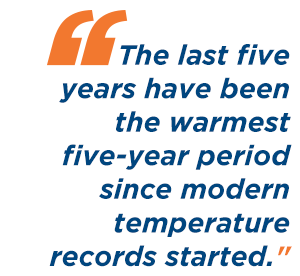Santiago, Chile, will soon roll out the world’s first public transportation system run primarily on solar powered energy. PR Newswire reports that electricity generated by a new solar power plant will fill up to 60 percent of Metro of Santiago’s energy demand starting sometime in 2017.
Who’s Making the Switch
 Metro of Santiago, an underground railway network, serves Chile’s capital city. The system was once described by SantiagoTourist.com as “very clean, efficient and packed like sardines during rush hours.” The system currently carries 2.2 million passengers per day in a city with a population of more than five million.
Metro of Santiago, an underground railway network, serves Chile’s capital city. The system was once described by SantiagoTourist.com as “very clean, efficient and packed like sardines during rush hours.” The system currently carries 2.2 million passengers per day in a city with a population of more than five million.
The Power Behind the Project
 The Metro will receive power generated from the El Pelicano Solar project, a 100-megawatt solar power plant going up near the cities of La Higuera and Vallenar. An agreement between Total and SunPower Corp. says the latter will purchase 300 gigawatt hours per year for “the supply of clean, solar energy” to Metro of Santiago. Oil and gas company, Total, is the world’s second ranked solar energy operator with SunPower.
The Metro will receive power generated from the El Pelicano Solar project, a 100-megawatt solar power plant going up near the cities of La Higuera and Vallenar. An agreement between Total and SunPower Corp. says the latter will purchase 300 gigawatt hours per year for “the supply of clean, solar energy” to Metro of Santiago. Oil and gas company, Total, is the world’s second ranked solar energy operator with SunPower.
Why It Matters
 Eduardo Medina is SunPower’s executive vice president of global power plants. He says, “Solar is an ideal energy source for Chile because of the country’s high solar resource and transparent energy policies.”
Eduardo Medina is SunPower’s executive vice president of global power plants. He says, “Solar is an ideal energy source for Chile because of the country’s high solar resource and transparent energy policies.”
Bernard Clément, Total’s senior vice president, Business & Operations of the New Energies division, agrees. “We are proud to partner with Metro in developing a new way of powering public transportation systems through competitive, reliable and clean energy.”
Fast Tracking Solar Powered Transportation
![]() If all goes according to plan, construction of the solar power plant to fuel the metro system will begin later this year and should be up and running by late next year. That puts Metro of Santiago on track to run on mostly solar energy by late 2017.
If all goes according to plan, construction of the solar power plant to fuel the metro system will begin later this year and should be up and running by late next year. That puts Metro of Santiago on track to run on mostly solar energy by late 2017.
Explore Chile’s Metro of Santiago, or learn more about solar power plants and the benefits of solar energy.


 Summer brings us hotter temperatures and high travel season, so we’ve compiled a few links with some summer energy-saving tips for your reference below. Stay cool and happy travels!
Summer brings us hotter temperatures and high travel season, so we’ve compiled a few links with some summer energy-saving tips for your reference below. Stay cool and happy travels! Approximately 40 percent of a home’s heat comes through its windows. By bouncing solar energy back and away from the interior, window films provide a home or other building with a “solar shield,” cutting cooling costs by as much as 30 percent.
Approximately 40 percent of a home’s heat comes through its windows. By bouncing solar energy back and away from the interior, window films provide a home or other building with a “solar shield,” cutting cooling costs by as much as 30 percent. While almost any window film will provide heat rejection, today’s modern, high quality window films filter out damaging UV rays yet still allow visible light to penetrate the film’s surface. Although heat-causing solar energy is reflected back outside, creating energy savings, light is allowed to penetrate the film, preserving interior aesthetics. Not to mention preserving the enjoyment of beautiful views!
While almost any window film will provide heat rejection, today’s modern, high quality window films filter out damaging UV rays yet still allow visible light to penetrate the film’s surface. Although heat-causing solar energy is reflected back outside, creating energy savings, light is allowed to penetrate the film, preserving interior aesthetics. Not to mention preserving the enjoyment of beautiful views! The harmful effects of sunlight add up, not just in terms of energy costs, but also in damage to furnishings. Window film protects valuable fabrics and art from damaging ultraviolet rays that cause fading. This can potentially save thousands of dollars in replacement costs. Also, a variety of styles and hues make window films an architectural enhancement that can increase a building’s design value. Some homes will even qualify for a tax credit.
The harmful effects of sunlight add up, not just in terms of energy costs, but also in damage to furnishings. Window film protects valuable fabrics and art from damaging ultraviolet rays that cause fading. This can potentially save thousands of dollars in replacement costs. Also, a variety of styles and hues make window films an architectural enhancement that can increase a building’s design value. Some homes will even qualify for a tax credit. Aside from its heat rejection capabilities, window film offers a number of valuable benefits. First, it protects occupants from damaging UV rays and the glare that leads to eye fatigue. These same films allow more natural light to filter through and help reduce the need for artificial lighting. Second, window film helps to eliminate hot spots within a space, regulating the temperature and eliminating the need to run the air conditioning as frequently.
Aside from its heat rejection capabilities, window film offers a number of valuable benefits. First, it protects occupants from damaging UV rays and the glare that leads to eye fatigue. These same films allow more natural light to filter through and help reduce the need for artificial lighting. Second, window film helps to eliminate hot spots within a space, regulating the temperature and eliminating the need to run the air conditioning as frequently. The idea is not a new one. For years builders and homeowners have used window film to help conserve energy and achieve ZNE, such as in this
The idea is not a new one. For years builders and homeowners have used window film to help conserve energy and achieve ZNE, such as in this  In a smart energy home, including the SolarCity Smart Energy Home, a battery system stores solar electricity for use at night. The home’s gateway controls all energy devices to ensure maximum solar generation and consumption. An electric water heater, for example, uses solar energy collected throughout the day to heat water stored for use at night. The Nest Learning Thermostat modifies the home’s energy usage based on how much solar energy is available, ensuring the needed energy won’t be exported back to the grid.
In a smart energy home, including the SolarCity Smart Energy Home, a battery system stores solar electricity for use at night. The home’s gateway controls all energy devices to ensure maximum solar generation and consumption. An electric water heater, for example, uses solar energy collected throughout the day to heat water stored for use at night. The Nest Learning Thermostat modifies the home’s energy usage based on how much solar energy is available, ensuring the needed energy won’t be exported back to the grid. The SolarCity Home’s technology and the size of the system that controls it are customized to the residents’ energy usage. In general, the homes offer all the comforts of other modern homes without the excessive energy use.
The SolarCity Home’s technology and the size of the system that controls it are customized to the residents’ energy usage. In general, the homes offer all the comforts of other modern homes without the excessive energy use. Much of the technology featured in today’s smart energy homes is readily available. So whether you live in Hawaii or elsewhere, there’s a strong likelihood that a smart energy home will soon be available in your neighborhood. The question, however, isn’t whether you’ll want to live in one. If you’re like most smart energy home residents, it will be how could you have ever lived without one.
Much of the technology featured in today’s smart energy homes is readily available. So whether you live in Hawaii or elsewhere, there’s a strong likelihood that a smart energy home will soon be available in your neighborhood. The question, however, isn’t whether you’ll want to live in one. If you’re like most smart energy home residents, it will be how could you have ever lived without one. Greener, albeit fake, grass has quickly become an acceptable alternative to natural grass for many Californians. The artificial turf business in the Golden State is booming as a result, according to an
Greener, albeit fake, grass has quickly become an acceptable alternative to natural grass for many Californians. The artificial turf business in the Golden State is booming as a result, according to an  Governor Jerry Brown last year ordered the state’s first mandatory watering restrictions in history. Lawn watering typically accounts for one-third of urban water use, so lawns are a natural choice for reducing water consumption. Since the restrictions took effect, business has grown nonstop for local turf manufacturers and retailers.
Governor Jerry Brown last year ordered the state’s first mandatory watering restrictions in history. Lawn watering typically accounts for one-third of urban water use, so lawns are a natural choice for reducing water consumption. Since the restrictions took effect, business has grown nonstop for local turf manufacturers and retailers. The market ranges from celebrities to the middle-class – pretty much anyone who values a greener lawn while staying within the state’s stringent watering restrictions. Those who’ve tried artificial grass claim newer versions far surpass the original AstroTurf, bearing a much closer resemblance to lush, natural grass – only without the constant need for watering and mowing.
The market ranges from celebrities to the middle-class – pretty much anyone who values a greener lawn while staying within the state’s stringent watering restrictions. Those who’ve tried artificial grass claim newer versions far surpass the original AstroTurf, bearing a much closer resemblance to lush, natural grass – only without the constant need for watering and mowing. Not everyone thinks artificial grass is a good solution. Oddly, they cite the environment as the reason. Many conservation groups insist that artificial turf does little to foster soil health. Nor is it easily recycled. Some argue it can lead to excessive water runoff. To add to these concerns, the U.S. Environmental Protection Agency has begun an investigation into the possible health risks of artificial turf used on playing fields.
Not everyone thinks artificial grass is a good solution. Oddly, they cite the environment as the reason. Many conservation groups insist that artificial turf does little to foster soil health. Nor is it easily recycled. Some argue it can lead to excessive water runoff. To add to these concerns, the U.S. Environmental Protection Agency has begun an investigation into the possible health risks of artificial turf used on playing fields. Your best choice depends on your budget, space, and to a lesser degree, your sense of style. Whether you search online or head to your local gardening shop, you should find a good selection available. Be careful to check the measurements of both the barrel and the space it will occupy. Prices typically start at more than $100. If cost is an issue, you can find directions for creating your own at
Your best choice depends on your budget, space, and to a lesser degree, your sense of style. Whether you search online or head to your local gardening shop, you should find a good selection available. Be careful to check the measurements of both the barrel and the space it will occupy. Prices typically start at more than $100. If cost is an issue, you can find directions for creating your own at  Since a typical summer rainstorm can easily fill most rain barrels and cause overflow, make sure you place yours in an area that can effectively drain water – without ruining your home’s foundation in the process. Some barrels have overflow spouts allowing you to direct the drainage.
Since a typical summer rainstorm can easily fill most rain barrels and cause overflow, make sure you place yours in an area that can effectively drain water – without ruining your home’s foundation in the process. Some barrels have overflow spouts allowing you to direct the drainage. The captured water needs to be easily accessible. In most cases, this will mean dunking a watering can into the barrel. If your barrel has a spigot, make sure a reasonably sized can will fit underneath the valve.
The captured water needs to be easily accessible. In most cases, this will mean dunking a watering can into the barrel. If your barrel has a spigot, make sure a reasonably sized can will fit underneath the valve. It’s important to have some type of screen closure covering the top of your rain barrel – preferably one that latches. The goal is to keep mosquitoes out and children safe. Don’t create an environment where mosquitoes can lay eggs, or children could endanger themselves. You’ll find
It’s important to have some type of screen closure covering the top of your rain barrel – preferably one that latches. The goal is to keep mosquitoes out and children safe. Don’t create an environment where mosquitoes can lay eggs, or children could endanger themselves. You’ll find  Even a little water collection is better than none. Returning groundwater to the ground – while bypassing our overworked sewage system – is a win-win for the environment and its inhabitants – especially those who like to flush their toilets frequently.
Even a little water collection is better than none. Returning groundwater to the ground – while bypassing our overworked sewage system – is a win-win for the environment and its inhabitants – especially those who like to flush their toilets frequently. Experts say that to achieve this, fossil fuels will need to be eliminated in the later half of the 21st century. Otherwise massive droughts and flooding are just a few of the disastrous weather conditions future generations will have in store. To illustrate the point,
Experts say that to achieve this, fossil fuels will need to be eliminated in the later half of the 21st century. Otherwise massive droughts and flooding are just a few of the disastrous weather conditions future generations will have in store. To illustrate the point,  While the Paris Agreement is generally recognized as a defining moment in the climate crisis, it lacks certain key elements, such as how it will be enforced. At any rate, the next step is to get it ratified. This entails a few caveats. Each country must approve it within their own country. No less than 55 countries must approve it. And those 55 countries must be responsible for 55 percent of global CO2 emissions. That means it will most certainly need approval by China and the U.S. They are the largest polluters according to
While the Paris Agreement is generally recognized as a defining moment in the climate crisis, it lacks certain key elements, such as how it will be enforced. At any rate, the next step is to get it ratified. This entails a few caveats. Each country must approve it within their own country. No less than 55 countries must approve it. And those 55 countries must be responsible for 55 percent of global CO2 emissions. That means it will most certainly need approval by China and the U.S. They are the largest polluters according to  Today we feature
Today we feature  A: Like many children, I liked animals. I was born in Kenya and so the natural environment and wildlife were very vivid. As I grew older, I realized the importance of clean air and water, both of which are vital to public health and a good quality of life. As the huge amounts of heat trapping gas goes into the atmosphere and changes the world’s climate, my concern for environmental issues continues to grow. Indeed, the last five years have been the warmest five-year period since modern temperature records started; 2014 was the warmest year; and now 2015 will smash the warmest year record again. The heat is on and increasing.
A: Like many children, I liked animals. I was born in Kenya and so the natural environment and wildlife were very vivid. As I grew older, I realized the importance of clean air and water, both of which are vital to public health and a good quality of life. As the huge amounts of heat trapping gas goes into the atmosphere and changes the world’s climate, my concern for environmental issues continues to grow. Indeed, the last five years have been the warmest five-year period since modern temperature records started; 2014 was the warmest year; and now 2015 will smash the warmest year record again. The heat is on and increasing. The U.S. Department of Energy and the U.S. Environmental Protection Agency set strict guidelines for products to prevent greenhouse gas emissions.
The U.S. Department of Energy and the U.S. Environmental Protection Agency set strict guidelines for products to prevent greenhouse gas emissions. 

 DSIRE – a nationally-funded initiative at the N.C. Clean Energy Technology Center at N.C. State University – makes it easy to see what incentives are available in your particular state with an interactive map of the U.S. You click on your state, choose a program type and a technology, then a list of incentives appears. It also lists the latest policies that promote energy efficiency and renewable energy. Updated in real-time through database content, it’s the most comprehensive resource of this type of information in the nation.
DSIRE – a nationally-funded initiative at the N.C. Clean Energy Technology Center at N.C. State University – makes it easy to see what incentives are available in your particular state with an interactive map of the U.S. You click on your state, choose a program type and a technology, then a list of incentives appears. It also lists the latest policies that promote energy efficiency and renewable energy. Updated in real-time through database content, it’s the most comprehensive resource of this type of information in the nation. 








